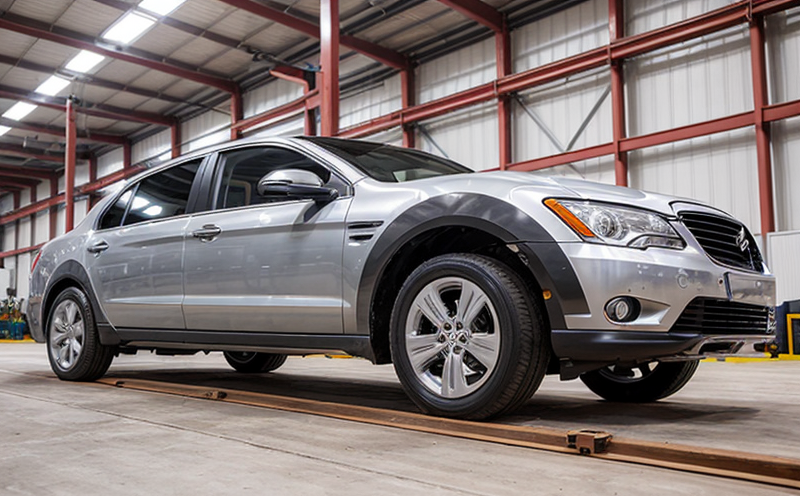EN 15085 Railway Welding Quality Testing
The EN 15085 standard is a pivotal document that sets out harmonized technical requirements and methods applicable to railway vehicle manufacturing. This service focuses on the specific aspect of ensuring mechanical and structural integrity through rigorous welding quality testing as per the requirements outlined in this European standard.
EN 15085 is critical for the railway industry because it ensures the highest level of safety and reliability, which are paramount when transporting passengers and goods over long distances. The standard covers various aspects such as design, manufacturing processes, inspection methods, and quality assurance systems. Within this framework, one key component is ensuring that all welds meet stringent mechanical and structural integrity standards.
Welding plays a crucial role in the construction of railway vehicles due to its ability to join different materials like steel, aluminum, or composites seamlessly. However, welding can introduce stresses and potential defects if not done correctly. Consequently, it is essential to verify that each weld meets the required mechanical properties and structural integrity.
The testing methods prescribed by EN 15085 are designed to detect any flaws in the welded joints before they are integrated into larger assemblies or components of railway vehicles. These tests can include visual inspections, non-destructive testing (NDT) techniques such as ultrasonic testing, radiography, and magnetic particle inspection, among others.
By conducting these thorough quality checks, we ensure that every weld adheres to the specified mechanical properties and structural integrity requirements set forth by EN 15085. This not only enhances product reliability but also supports compliance with international regulations and standards. Proper testing helps manufacturers identify issues early in the production process, preventing costly rework or failures later.
Our team of experienced engineers uses advanced instrumentation and equipment to perform these tests accurately and reliably. We employ both manual and automated systems depending on the complexity and type of weld being inspected. Our technicians are trained to interpret results correctly and provide detailed reports that outline any discrepancies found during testing.
The importance of this service cannot be overstated, especially given the critical nature of railway infrastructure. Ensuring mechanical and structural integrity through welding quality testing helps prevent accidents caused by substandard materials or poor craftsmanship. It also builds trust between manufacturers and regulatory bodies, fostering a safer transportation environment for everyone involved.
Why It Matters
Ensuring compliance with EN 15085 is not just about meeting industry standards; it’s about safeguarding lives and assets. The railway sector operates in challenging environments where even minor structural failures could lead to catastrophic consequences. By adhering strictly to the provisions laid out in this standard, we contribute significantly towards maintaining high levels of safety and reliability.
Compliance with EN 15085 also enhances a company’s reputation within the competitive global market. Adhering to internationally recognized standards demonstrates commitment to quality and professionalism, which can be a deciding factor when bidding for contracts or seeking partnerships.
- Enhanced Safety: The primary goal of EN 15085 is to ensure that welded components in railway vehicles are safe. Any defects identified during testing must be addressed promptly to prevent accidents.
- Better Reputation: Consistently meeting these standards helps build a strong reputation for reliability and quality among customers and stakeholders.
The global nature of the railway industry means that companies often need to comply with multiple sets of regulations. Ensuring alignment with EN 15085 provides peace of mind that your products meet the necessary requirements, thereby reducing risks associated with non-compliance penalties or recalls.
Scope and Methodology
| Aspect | Description |
|---|---|
| Visual Inspection | This involves examining the weld visually for any visible defects or irregularities. |
| NDE Techniques | Includes ultrasonic testing, radiography, and magnetic particle inspection to detect internal flaws not visible on surface examination alone. |
| Material Testing | Determines the mechanical properties of materials used in welding processes. |
| Evaluation Criteria | Absorption rate, tensile strength, elongation, impact absorption energy, and other relevant factors are evaluated based on specified limits. |
The scope of EN 15085 encompasses various stages from material selection to final assembly. It ensures that every aspect contributing to the structural integrity of railway vehicles is meticulously addressed. Our methodology follows these steps:
- Material Selection: Ensuring that appropriate materials are chosen for welding based on their mechanical properties.
- Welding Process: Conducting welds following specified procedures to maintain uniformity and consistency.
- Non-Destructive Examination (NDE): Utilizing advanced NDE techniques to inspect the integrity of welded joints without causing damage.
- Evaluation & Reporting: Analyzing results from all tests and providing comprehensive reports detailing any deficiencies found along with recommendations for corrective actions if necessary.
This holistic approach ensures that each stage contributing to the mechanical and structural integrity is thoroughly examined, thereby upholding stringent quality standards.
International Acceptance and Recognition
- Regulatory Compliance: Many countries have adopted EN 15085 as a national standard due to its comprehensive nature. This includes countries like Germany, France, Italy, Spain, the United Kingdom, and several others across Europe.
- Global Market Access: Meeting these standards opens doors for exporting products internationally, especially within the European Union where this standard is widely accepted.
- Industry Recognition: Leading manufacturers in the railway sector recognize EN 15085 as a benchmark for excellence in manufacturing processes. Compliance with this standard enhances brand reputation and customer trust.
- Cost Savings: While initial implementation costs may be higher, long-term savings come from reduced maintenance needs and extended product lifespans.
The widespread acceptance of EN 15085 underscores its importance in the global railway industry. By adhering to these standards, companies demonstrate their commitment to producing safe, reliable products that meet international expectations.





